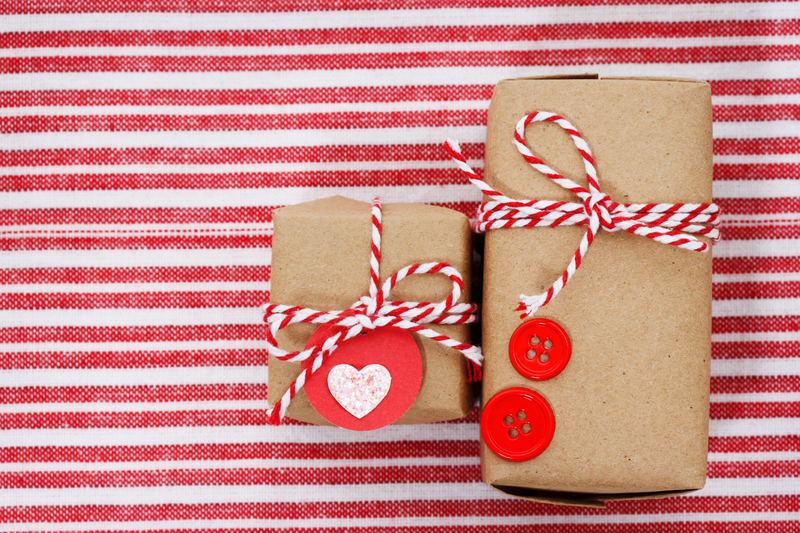The Art of Sustainable Packaging and Cardboard Disposal
As concerns about environmental impact and waste management grow, the demand for sustainable packaging solutions and effective cardboard disposal methods has never been higher. This comprehensive guide explores the evolution, benefits, and best practices in the sphere of sustainable packaging and cardboard recycling, equipping you with the knowledge to make eco-conscious choices that contribute to a healthier planet.

Understanding Sustainable Packaging: The Foundation of a Greener Future
Sustainable packaging encompasses the design and use of packaging materials with minimal environmental impact throughout their lifecycle. By reducing resource consumption and facilitating responsible disposal, sustainable packaging plays a vital role in conserving natural resources and minimizing pollution.
Key Principles of Sustainable Packaging
- Resource Efficiency: Use minimal material without compromising on product protection.
- Renewable & Recyclable Materials: Favor materials that can be easily recycled or sourced from renewable sources such as paper and cardboard.
- Reduced Carbon Footprint: Manufacture and transport packaging with lowered emissions and energy use.
- Minimalistic Design: Avoid over-packaging and unnecessary materials, focusing on functionality.
By adhering to these principles, brands and consumers alike can work together to support the art of sustainable packaging, ensuring product safety and integrity without harming the ecosystem.
Popular Eco-Friendly Packaging Materials
- Cardboard: One of the most widely used materials for sustainable packaging due to its recyclability and biodegradability.
- Kraft Paper: A robust, renewable option known for its strength and minimal environmental impact.
- Compostable Plastics: Made from plant-based polymers, designed to break down in composting conditions.
- Biodegradable Films: Useful as wraps or bags, decomposing naturally without leaving harmful residues.
Cardboard packaging especially stands out, not only for its high recycling rate but also its versatility and strength. It's a cornerstone in the world of sustainable packaging solutions.
The Importance of Cardboard in Sustainable Packaging
Cardboard, often taken for granted, is an incredibly versatile and eco-friendly packaging material. Its widespread adoption owes much to its effectiveness, recyclability, and biodegradability.
Benefits of Cardboard Packaging
- Recyclability: Nearly all types of cardboard can be recycled, reducing landfill waste and resource extraction.
- Lightweight Yet Durable: Reduces shipping costs and emissions while providing ample protection for goods.
- Customizability: Cardboard can be easily shaped, printed, and branded for various packaging needs.
- Cost-Effective: It's affordable for both manufacturers and consumers, making it a staple in every industry.
When assessing responsible packaging options, cardboard emerges as a prime example of sustainability in action.
Challenges in Cardboard Disposal
Despite its many benefits, the increasing use of cardboard creates challenges in waste management and disposal. Effective cardboard disposal is key to ensuring the material's full environmental benefits are realized.
Common Issues in Cardboard Disposal
- Contamination: Food residue, grease, and other materials can render cardboard unrecyclable.
- Improper Sorting: Mixing cardboard with other waste streams often leads to downcycling or landfill disposal.
- Volume Issues: Large, bulky boxes occupy significant landfill space if not properly recycled.
Proper cardboard recycling is essential to minimize pollution and support circular waste management systems.
Effective Cardboard Recycling: Best Practices
Implementing best practices for cardboard recycling is a crucial step in the journey toward eco-friendly packaging solutions and sustainable waste management.
How to Dispose of Cardboard Responsibly
- Remove Contaminants: Make sure cardboard is free of food, plastic liners, and tape before recycling.
- Flatten Boxes: Break down boxes to save space in recycling bins and trucks, improving collection efficiency.
- Separate from Other Recyclables: Avoid mixing with glass or plastic to prevent contamination of recycling streams.
- Keep Dry: Wet or moldy cardboard can't be recycled. Store inside or cover to shield from rain.
Recycling facilities have advanced rapidly, but their efficiency still depends largely on the quality of materials they receive.
Cardboard Recycling Process Explained
The journey from old box to new packaging is both fascinating and crucial for sustainability:
- Collection: Cardboard is gathered from curbside bins, businesses, and recycling centers.
- Sorting: Workers or machines separate cardboard into categories (corrugated, paperboard, etc.).
- Shredding and Pulping: The cardboard is shredded, then mixed with water and chemicals to break it down into pulp.
- Filtering: Any remaining contaminants, such as metals or plastics, are filtered out.
- Pressing and Drying: The pulp is rolled out into sheets, pressed, and dried to create new cardboard products.
- Reusing: The newly formed cardboard is used to manufacture new boxes, cartons, or paper products.
This closed loop not only conserves resources but also significantly reduces the environmental footprint of packaging.
Innovative Trends in Sustainable Packaging and Cardboard Disposal
As sustainability becomes more central to business and consumer values, innovative approaches to eco-friendly packaging and responsible cardboard disposal are emerging.
Smart Packaging Solutions
- Water-based Inks: These minimize toxic runoff and improve recyclability.
- Bio-based Coatings: Replace plastic laminates, enhancing compostability without sacrificing performance.
- Modular & Reusable Packaging: Encourages customers to return or repurpose packaging, cutting down waste.
- Packaging-as-a-Service: Companies retain ownership of packaging, collecting it for reuse or recycling.
Technological Advancements in Cardboard Recycling
- AI-powered Sorting: Artificial intelligence systems can accurately identify and sort different types of cardboard and contaminants, boosting recycling rates.
- Robotics: Automated arms handle bulky or heavy cardboard more efficiently, reducing injury and improving throughput.
The art of sustainable packaging is constantly evolving, driven by a blend of creative design, advanced technology, and eco-conscious decision-making.
The Role of Businesses and Consumers in Sustainable Packaging
Responsibility is shared--both companies and consumers must participate actively to drive real change in packaging practices and waste management.
What Can Businesses Do?
- Invest in Sustainable Materials: Choose cardboard and paper from responsibly managed forests (look for FSC or PEFC certification).
- Design for Disassembly: Make packaging easy to open, flatten, and recycle.
- Educate Customers: Clearly label packaging with disposal instructions and recycling information.
- Take-Back Programs: Offer incentives for customers to return packaging for reuse or proper recycling.
How Consumers Can Contribute
- Purchase Responsibly: Support brands using sustainable, minimal, or recyclable packaging options.
- Recycle Correctly: Follow local recycling guidelines to ensure cardboard and paper are properly processed.
- Reuse Packaging: Repurpose boxes for storage, moving, or crafts before recycling.
- Advocate: Encourage local businesses and community leaders to adopt sustainable packaging initiatives.
Small, consistent actions can spark large-scale improvements in cardboard disposal and sustainable packaging adoption.

Future Outlook: Challenges and Opportunities in Sustainable Packaging
The journey toward zero-waste packaging is both a challenge and an opportunity. Global supply chains, fluctuating recycling markets, and consumer preferences all influence how packaging materials are produced, used, and disposed of.
Key Challenges
- Global Waste Infrastructure: Many regions lack adequate recycling facilities, leading to more landfill waste.
- Economic Pressures: The cost of switching to sustainable materials can be high.
- Greenwashing: Some brands make false or exaggerated eco-friendly claims, eroding consumer trust.
Emerging Opportunities
- Consumer Demand: Shoppers are increasingly willing to pay more for sustainable packaging.
- Policy Support: Governments are introducing stricter regulations and incentives for sustainable materials and recycling.
- Circular Economy Models: Emphasize keeping materials in use through reuse and recycling, reducing the need for virgin resources.
The intersection of innovation, regulation, and consumer activism is creating new possibilities for truly sustainable packaging and responsible cardboard disposal.
Conclusion: Mastering the Art of Sustainable Packaging and Cardboard Disposal
In the age of environmental awareness, the art of sustainable packaging and cardboard disposal is about more than just meeting compliance; it's a creative, collaborative, and conscientious effort to protect our planet. From choosing recyclable materials like cardboard, to improving recycling practices and supporting innovative solutions, every stakeholder has a vital role to play.
By making informed choices, demanding better from brands, and practicing responsible disposal, we all contribute to a world where packaging is as smart, sustainable, and circular as possible.
Key Takeaways
- Sustainable packaging is essential for reducing waste and conserving resources.
- Cardboard is a cornerstone material thanks to its recyclability, cost-effectiveness, and minimal environmental impact.
- Proper cardboard disposal includes keeping materials clean, dry, and sorted to facilitate recycling.
- Innovation, legislation, and consumer advocacy are driving improvements in the field.
- Both businesses and individuals must act together for a greener future.
Embracing sustainable packaging solutions and mastering the art of responsible cardboard disposal can significantly lighten our environmental footprint, paving the way for a cleaner, more sustainable tomorrow.